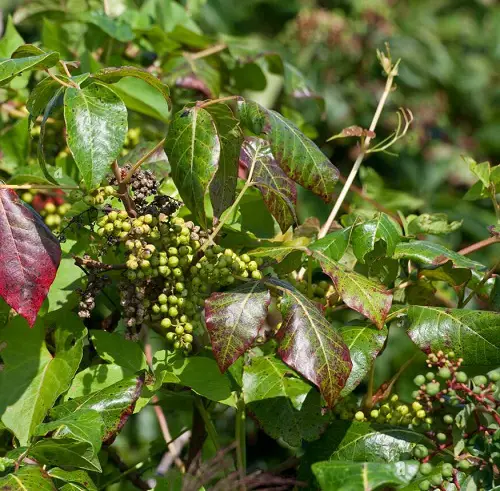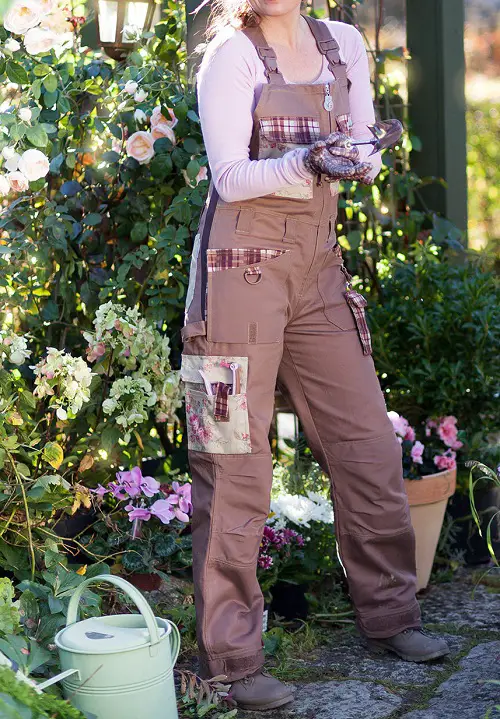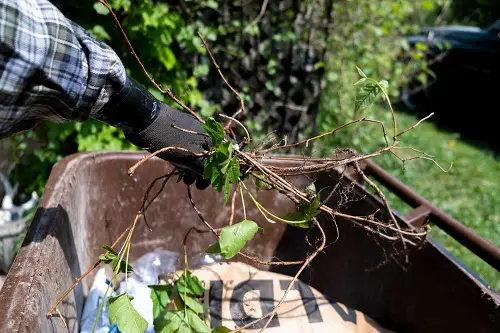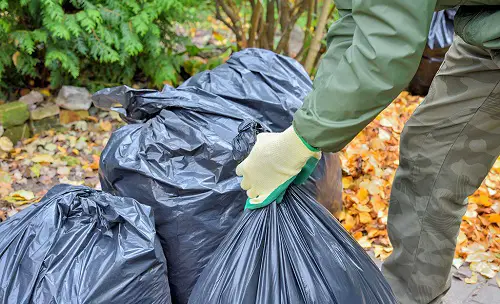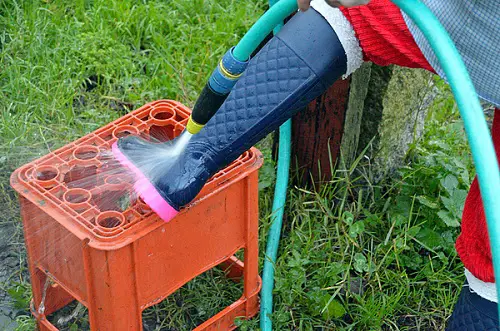Want to know What Does Poison Ivy Look Like and how to get rid of the plant for good? Keep on reading to explore all the details!
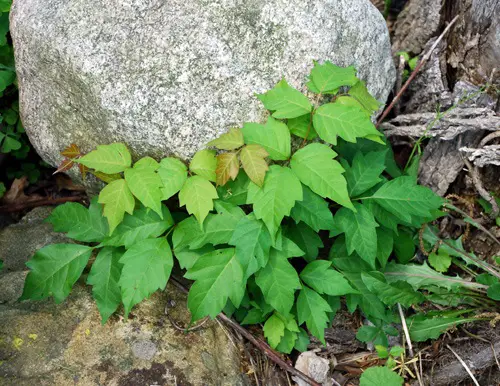
If you are not sure how to spot a poison ivy and how to get rid of it for good, don’t worry! Here’s all you need to know!
What Does Poison Ivy Look Like?
So, What Does Poison Ivy Look Like? Well, Poison ivy leaves can be red or green and may have a shiny or dull appearance. The plant may also produce flower buds, flowers, or berries in dense clusters near the vine.
The leaves are usually 2 to 4 inches long and have jagged edges. The leaves are usually glossy, and the stems and veins may have a reddish tint. Poison ivy can also grow as a vine with aerial rootlets or as a low-growing shrub.
Poison Ivy Flower Buds
In the spring, shortly after the first leaves appear, small green or yellow flower buds form in clusters near the poison ivy vine.
Find Does Poison Ivy Have Flowers here
Poison Ivy Berries
By late summer, poison ivy flowers develop into berries that start off green and eventually turn whitish in early fall. These berries are safe for birds to eat but not for humans.
It is generally advised to avoid touching or consuming any berries that are not familiar to you.
Poison Ivy Reaction

According to the American Skin Association, approximately 50 million people experience a poison ivy reaction every year due to urushiol, an oily resin present in its leaves, stems, and roots.
Urushiol can adhere to various surfaces, including skin, clothing, gardening tools, and animal fur, upon contact.
To avoid a rash, wash off the part of the skin immediately after exposure using any soap and plenty of water to prevent an allergic reaction.
How to Get Rid of Poison Ivy Plant?
1. Identify the Plant

Poison ivy is a plant with three leaves that are typically green but may turn red in the fall. It usually grows close to the ground unless it climbs a tree or other object.
The leaves can have either smooth or toothed edges and can be either shiny or dull in appearance. The middle leaflet of the plant is slightly longer than the other two.
2. Gather the Tools
You’ll need a sharp shovel to extract the roots of the plant. But before that, we recommend using shears or pruners to get rid of the vines or branches.
3. Dress Up Right
Poison Ivy should not come in direct contact with your skin, so wear long-sleeved shirts and full-length pants. Also, work boots and heavy-duty rubber gloves.
You can also use duct tape to seal the gaps between the sleeves and gloves.
4. Get Rid of It Properly
Removing the above-ground parts of poison ivy without extracting the roots will not prevent it from regrowing. For that, excavate the roots to a depth of approximately eight inches below the plant.
To ensure that the roots are dead, you may pour boiling water on them, suffocate them with mulch, or employ a commercial herbicide.
5. Put it in Plastic Bag
Once you’re done, gather all the leaves and branches in a pile and then put them into a plastic bag. Don’t burn the pile, as it will release the urushiol into the air and irritate your eyes and lungs.
NEVER add it to the compost pile, as it can reintroduce the plant to your garden later on.
Aftercare
- Once you’re done, use a sanitizer spray, rubbing alcohol, or vinegar to clear your garden tools.
- Turn your clothes inside out and wash them in a separate laundry cycle with the wash set to heavy.
- You should also rinse the boots with soapy water and use a hose on them. Also, discard the gloves.
You should use cool water to wash your hands because hot water opens up the pores of the skin. If you get a rash, use a calamine lotion. But if that doesn’t get rid of it in a day or two, consult a medical professional.



